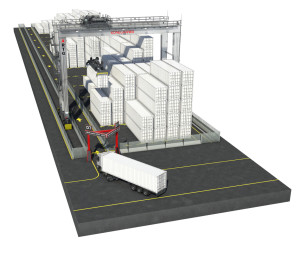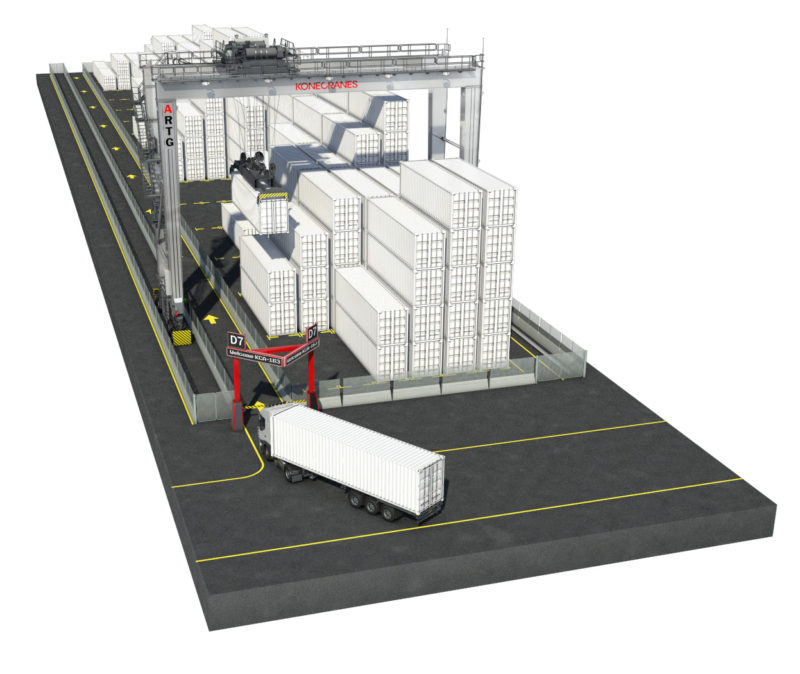 State-owned port operator PT Pelabuhan Indonesia III (Pelindo III) of Indonesia has placed a repeat order with Konecranes for an automated RTG (ARTG) system that includes nine ARTG cranes.
State-owned port operator PT Pelabuhan Indonesia III (Pelindo III) of Indonesia has placed a repeat order with Konecranes for an automated RTG (ARTG) system that includes nine ARTG cranes.
The order will be delivered to Terminal Petikemas Semarang (TPKS), an operational terminal in Central Java, at the end of 2016.
Janne Eklund, Konecranes’ sales manager for port cranes, said in a statement that the company has already delivered the first order for cranes and the complete automation system to the terminal, Indonesia’s first automated facility which recently opened.
Pelindo III has decided to proceed with the next phase of the terminal’s development and convert half of the existing manual RTG yard into an automated system with personnel access and horizontal traffic control, added Eklund.
The ordered ARTG system utilizes a next-generation automation platform, including fully automated stacking, remote operating stations for truck handling, and the related container yard infrastructure.
After the delivery of this order, TPKS will have a total of 20 cabin-less ARTGs operating in 10 automated blocks.
Pelindo III’s automated terminal in Lamong Bay, Surabaya, was inaugurated in May 2015. The terminal will have a total of 20 automated stacking cranes, 10 ship-to-shore cranes, and five straddle carriers, all from Konecranes.
Incheon acts to expand capacity
Meanwhile, the Port of Incheon in South Korea is determined to raise its position in the rankings of the world’s busiest ports by 2025.
Positioned below the World Shipping Council’s top 50 container ports—in contrast to Busan Port, which is fifth busiest, Incheon aims to achieve its ambitious goal of joining the Top 30 league in the next 10 years by deepening its harbor and opening new terminals so as to accommodate ultra-large box ships.
Incheon port has already rolled out measures to realize these objectives, according to Yoo Chang Keun, CEO of port operator Incheon Port Authority (IPA).
In the first phase of redevelopment of Incheon New Port, IPA plans to add six berths along a 1.6-kilometer length of quay to accept vessels of up to 10,000 TEUs in capacity. Terminal A will be run by Hanjin Shipping and will open in early 2016, while Terminal B, which opened June 1, will be managed by Sun Kwang Newport Container Terminal.





